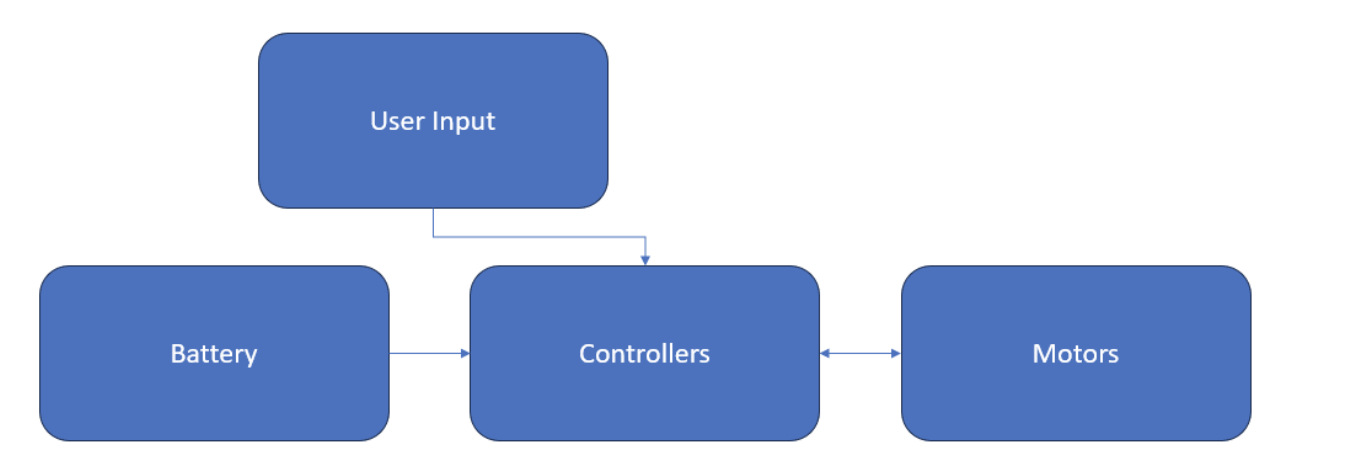There are very few among us who haven’t seen or heard of electric vehicles (EVs). When thinking of EVs, what comes to mind might range from wishing for a stylish Tesla to wondering how anyone could put up with so little range and charging infrastructure. However, it’s tough to have an academically informed opinion when so much information comes from sales pitches and nay-sayers. I’m going to outline here exactly how EVs work, what the technological capabilities are right now, and their practicality today.
How do Electric Vehicles work?
Electric Vehicles are defined by their ability to generate torque exclusively using electric motors. These motors necessitate each vehicle to have a battery to power them, as well as onboard electronics to both monitor the performance of the systems and control them.

I will briefly address each subsystem and how it works.
Electric Motors
Most simply, electric motors are machines that convert electrical energy into mechanical rotation. This is possible because of the interactions between electric current and magnetism, i.e. electromagnetism and how we can engineer circuits with magnets to produce a torque. If you want to learn more about how motors work, have a look at https://www.motortrend.com/features/how-electric-cars-work-ev-differences-definitions/
Interestingly, in EVs today, there are no electric motors being used. Technically, these things that we tend to call motors are Electric Machines. This is because ‘motors’ only function is to generate torque, whereas what we have today have a second, incredible feature that distinguishes them from all motors called “Regenerative Braking”.
Regenerative Braking is a concept that makes use of bi-directional motors wherein when you apply a current to the motor, it produces rotation. However, when you rotate a motor axle, the motor can be engineered such that it takes almost all of that energy and converts it back into electrical energy to feed back to the battery. This means that every time you brake, you’re putting all of your current speed back into the battery as a sort of speed potential.
Battery
Battery chemistry is one of the most heavily invested areas of research today – it has incredible potential for growth in the future, as getting the electric density (number of kilowatt-hours per kilogram of battery) higher and higher makes battery operation much more feasible in vehicles. The primary battery chemistry most often used in EVs is Li+, or Lithium-ion. This is because with existing infrastructure, it is among the cheaper chemistries to manufacture and has one of the highest energy densities.
Controllers
This description of these components is greatly simplified, as the circuits to construct the controllers become very complicated, as well as proprietary. Essentially, this subsystem is made up of sensors, controllers, and a centralized computer. The computer takes in data from the user, the motors, the environment, and the battery, and outputs signals to the controllers to command operation of the vehicle.
What are the capabilities of EVs today?
This is the battery capacity range of most batteries on the market now. This, paired with vehicle weight, efficiency, and driving conditions yields driving range. The current driving ranges are approaching 300 miles per charge.
Note: MPGe is a number commonly used to describe driving efficiency for EVs but is not a valid direct comparison to miles per gallon (MPG). This was an arbitrary metric chosen by the EPA and should not be viewed to be equivalent to MPG. What is equivalent is to look at what I’ll coin as miles per dollar (MPD). To calculate this, divide the MPG of the gas vehicle that you’re considering by the average cost of gas ($/gallon) in your area. Then, to calculate MPD for an electric vehicle, divide the number 33.7 by the MPGe, then multiply that result by the average cost of electricity ($/kWh) in your area. This will give you a cost-driven, efficiency comparison between a gas and an electric vehicle.

How practical are EVs today?
Some of the primary concerns about EVs are range, cost, and charging.
As can be seen in the current technology section, the range of the new EVs is lower than market standard for internal combustion engines, but still comparable. That is certainly a factor to consider when purchasing a vehicle, but one that is fast deteriorating, as the technology is there. This is shown very well by the 2023 Lucid Air, that boasts a range of 516 miles estimated by the EPA for a single charge. This means that as more money goes into the EV market, the range of the average EV will increase drastically.
Electric Vehicles are still more expensive than conventional gas vehicles, often by a margin of ten thousand dollars or more. The Inflation Reduction Act offered a $7500 credit to most EV purchases, so this cost differential is decreasing, but still a factor. However, it’s important to note that the MPD for EVs is much lower than gas vehicles, and EVs need far less maintenance than gas vehicles as there are far few components.
Charging is a concern of the past. Tesla’s supercharger network is being forced to add infrastructure such that all EVs can charge there, and there is enough capability in the United States to travel anywhere in the contiguous US using an EV. Additionally, charging that used to take hours can now be done in as little as 12 minutes using DC, high voltage charging.
Final remarks
It’s challenging to say whether each person should purchase an electric vehicle – it’s still highly dependent on every individual’s needs, but EVs are already versatile, practical, and getting cheaper by the day. Within the next decade, it is expected that electric vehicles will make up over half of new vehicles produced by automakers. With all of this in mind, it is very exciting to see where the future will go with this technology.

Comments